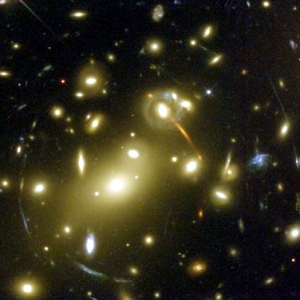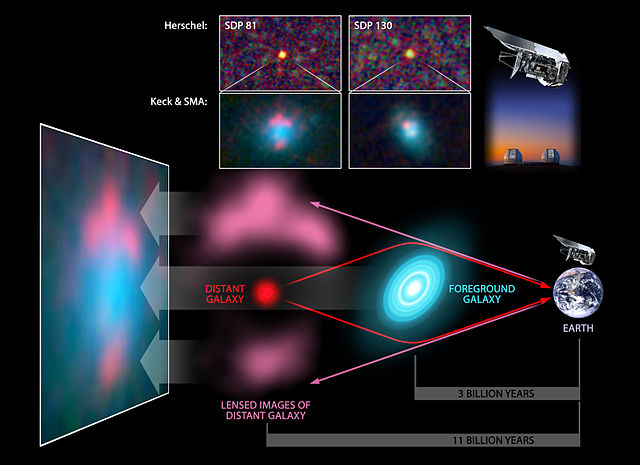Research

From 2009-2013, I was a PhD student in the Institute for Astronomy at the Royal Observatory Edinburgh, working under the supervision of Rob Ivison and Philip Best.
There, I carried out research on extragalactic astronomy, and in particular, on the role played by dust-obscured star formation in galaxy evolution, and on the build-up of stellar mass in the Universe. I submitted my thesis on observations of the molecular gas content of lensed submillimetre galaxies with the Karl G. Jansky Very Large Array in April 2013 and successfully defended in July 2013.
From 2013-2017, I was a PDRA in the Centre for Extragalactic Astronomy, Durham University, working on Ian Smail's "DUSTYGAL" European Research Council Advanced Investigator Grant, where my work made a significant contribution to 13 publications in high-impact journals
In August 2017, I moved to Jodrell Bank Centre for Astrophysics in Manchester on an STFC Consolidated Grant position to probe star formation and accretion through cosmic time with deep radio surveys. My work is underpinned by the legacy surveys conducted with eMERLIN, the UK's facility for high-resolution radio astronomy observations. I work closely with Rob Beswick, Tom Muxlow and Nick Wrigley.
Obscured star formation
The brightest and most massive galaxies in local clusters - the giant elliptical galaxies, such as M87 - host up to 1012 Solar masses worth of stellar material, yet are found today to be relatively dormant, converting only a few solar masses of molecular gas per year into new stars. Had they undergone such passive evolution throughout their lives, it would have taken them several times the confirmed age of the Universe - 13.7 billion years - to have formed their observed stellar populations.
The massive, quiescently-evolving galaxies we see today must therefore have had elevated star formation rates and looked very different in the past, yet for a long time, UV/optical surveys of the distant Universe failed to find the seeds of these massive galaxies. A key breakthrough came in 1997, when the first sensitive extragalactic surveys at submillimetre wavelengths were completed with the SCUBA instrument on the James Clerk Maxwell Telescope, revealing for the first time a population of distant galaxies of prodigious total luminosity, which are extremely faint in the UV/optical wavebands: the submillimetre galaxies (SMGs).
 The submillimetre waveband reveals redshifted far infrared emission from very dusty, actively star-forming galaxies. Far infrared emission is produced in galaxies when UV/optical photons from young, massive stars collide with interstellar dust particles, which then heat up and re-emit at longer wavelengths. The infrared luminosity (LIR) of a galaxy is thus directly related to its instantaneous star formation rate, and the typical LIR in SMGs implies that they are forming new stars at up to 1000 solar masses/year, rapid enough to assemble a giant local elliptical galaxy in only ~100 million years. Since the discovery of the first SMGs, it has been shown that up to half of the star formation in the entire history of the Universe has occurred in similarly dusty environments, impenetrable to UV/optical surveys.
SMGs are frequently detected in the distance behind nearby galaxy clusters, where flux from the distant SMG is boosted and its image distorted as its photons pass through the gravitational field of the intervening galaxy cluster.
The submillimetre waveband reveals redshifted far infrared emission from very dusty, actively star-forming galaxies. Far infrared emission is produced in galaxies when UV/optical photons from young, massive stars collide with interstellar dust particles, which then heat up and re-emit at longer wavelengths. The infrared luminosity (LIR) of a galaxy is thus directly related to its instantaneous star formation rate, and the typical LIR in SMGs implies that they are forming new stars at up to 1000 solar masses/year, rapid enough to assemble a giant local elliptical galaxy in only ~100 million years. Since the discovery of the first SMGs, it has been shown that up to half of the star formation in the entire history of the Universe has occurred in similarly dusty environments, impenetrable to UV/optical surveys.
SMGs are frequently detected in the distance behind nearby galaxy clusters, where flux from the distant SMG is boosted and its image distorted as its photons pass through the gravitational field of the intervening galaxy cluster.
Molecular gas
Molecular gas is the raw fuel for new star formation, thus making its study an essential component of any attempt to characterise star formation in a galaxy. The overall abundance of molecular gas is controlled by the balance between formation of H2 molecules on dust grains, and their destruction by UV photons. Molecular hydrogen is therefore most readily formed in dense environments, where the rate of formation is raised and the rate of destruction is lowered through self-shielding from UV photons. While H2 accounts for most of the gas supply, it does not produce strong enough emission lines to be observed directly in external galaxies. Fortunately, however it can be studied by proxy, due to its interactions with 12CO, the second most abundant molecule in the interstellar medium, which can be observed with sensitive millimetre and radio telescopes and used to deduce the mass, distribution, kinematics, density and temperature of the gas. 12CO studies of the Milky Way and nearby galaxies have shown that in settled, passively-evolving environments, most of the molecular gas is confined in giant molecular clouds (GMCs), which are clumpy, turbulent structures extending up to 500 lightyears in diameter and with masses of ~105 Solar masses, constituting a few percent of the total mass of the galaxy. These pockets of gas represent the sites at which new stars are formed at the rate of ~1 Solar mass per year. In the distant Universe, where we see more youthful and energetic galaxies, things are very different; at the extreme end, represented by SMGs, gas accounts for up to 40% of the total galaxy mass, with the gas - and hence star formation - being distributed throughout the entire galaxy. The observed dynamics of SMGs are those of strongly interacting or merging galaxies, in which the gas clouds of the progenitor galaxies are shredded by the interaction process and their material dredged-up and dispersed throughout the merging galaxy pair, triggering new star formation.
About the author
In addition to being an active researcher, I have also engaged in outreach work with the ROE Visitor Centre and Durham astronomy outreach team, including hands-on demonstrations of ``comet making'', planetarium shows, public talks, and school visits. On those rare occasions when I'm neither reducing data, working with obscure software packages, writing my own code nor writing up the outcome of same, I'm often to be found at the swimming pool, following Rangers Football Club, or looking wistfully at my alto saxophone and bass guitar, remembering the days when I had the time to commit to playing either.
